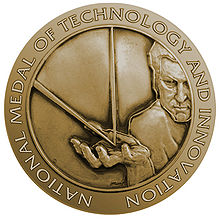Do You Follow the Innovator’s Way?
Tuesday, June 14th, 2011 Organizations and individuals around the world are interested in increasing their capacity to innovate. New methods for innovation (or innovating innovation) abound and include for example, translational science, open innovation marketplaces, design thinking applied to business, citizen science and new financing mechanisms such as crowdfunding.
Organizations and individuals around the world are interested in increasing their capacity to innovate. New methods for innovation (or innovating innovation) abound and include for example, translational science, open innovation marketplaces, design thinking applied to business, citizen science and new financing mechanisms such as crowdfunding.
Our interest in innovation is long standing. One can see that by looking at the impressive history of best selling books with innovation in the title and by doing a Google trend search on the word innovation. Innovating is very much a cognitive design challenge. Our ability to do it turns on understanding and supporting the skills, mental models and deeply felt psychological needs of innovators. Interestingly, most studies of innovation, especially at the organizational level, fail to take that into account. So I am always our the look out for well researched exceptions.
 Take for example, the outstanding book, The Innovator’s Way (MIT Press 2010). The authors define innovation as the adoption of a value-creating practice by a community. They review and debunk many current models and propose an approach based on eight essential practices. They derived these practices from a study of cases of innovation in a wide variety of contexts including technology, product, organizational and social. It is easy and instructive to compare your own personal approach to the eight practices.
Take for example, the outstanding book, The Innovator’s Way (MIT Press 2010). The authors define innovation as the adoption of a value-creating practice by a community. They review and debunk many current models and propose an approach based on eight essential practices. They derived these practices from a study of cases of innovation in a wide variety of contexts including technology, product, organizational and social. It is easy and instructive to compare your own personal approach to the eight practices.
What is best from a cognitive design standpoint is that they emphasize individual skills, attentional factors, and the key conversations and decisions that drive innovation in the trenches.
This offers a treasure trove of insights for the cognitive designer looking for ways to support and accelerate innovation.